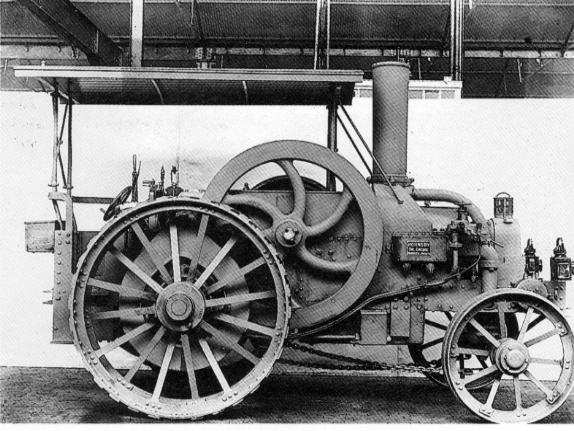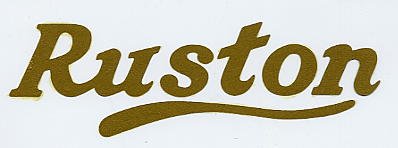In 1890 Ruston turned down a demand for higher wages -
with the excuse that the business was heardly earning him bread-and-cheese. In
the same year he paid for a new Drill Hall for the Lincoln Volunteers, to be
built at Broadgate. Inevitably the new building became known as 'Bread and
Cheese hall'. Joseph Ruston was nicknamed 'Mr Bread and Cheese. Profits, of the
Company had, in fact, been very high that year, but Ruston knew that to grant an
increase in wages to his employees then would probably put other local
engineering companies out of business!
Joseph Ruston died in 1897, but the family interest was
carried on by his elder son, Joseph Seward Ruston. His father had seen the
introduction of the oil engine, a product that was to feature in the works
output for many future years. Despite the domination of the oil engine market
by close neighbours R. Hornsby & Son, at Grantham (see pictures below)
Rustons played an important part in developing the internal combustion engine.
The Ruston fuel injector of 1912 became a model for future development. By the
outbreak of the 1914-18 War, they were building cold-start oil engines and were
fast gaining the ascendancy over Hornsbys.

Richard Hornsby
(1790-1864) founder of R.Hornsby & Sons, Grantham, in 1815.

R.Hornsby & Sons 2-cylinder portable
steam engine
of 1851 - one of the earliest portable steam
engines.
R.Hornsby & Sons
Hornsbys entered the oil engine field when they reached an agreement with
Herbert Akroyd Stuart in 1891 to be sole manufacturer of engines to his designs
(see pictures below) These engines were low-compression, paraffin-fuelled, and
required the aid of a blowlamp for starting. This was the start of more than 20
golden years for Hornsbys. They very quickly phased out all steam engine
building and pinned their faith completely on the internal combustion engine.

1892 Hornsby-Akroyd Nos 101 and 102 at Fenny
Stratford waterworks

The World's first successful
compression-ignition engine: Hornsby-Akroyd 7bhp
oil engine No 101, sold 8th
July 1892 and installed at Fenny Stratford waterworks.
Photo taken at
Ruston's Research centre, Beevor Street, Licoln.
The Hornsby-Akroyd oil engine was an immediate success. A total of more than
45,000 'Hot-Bulb' engines were produced at Grantham. Hornsbys were also very
adventurous in its application. By1896 they had produced the World's first
oil-engined tractor and the World's first oil-engined locomotives. They also
built engines for use in boats, submarines, lighthouses, radio stations etc.

20hp Hornsby oil tractor - the World's first
tractor with compression-ignition
engine, built 1896. Three were built in
1897 and exported to Australia.

The World's first compression-ignition
engined locomotive:
10hp Hornsby-Akroyd oil loco supplied to Woolwich
Arsenal in 1896
A Hornsby engine provided the power for illuminating the Statue
of Liberty at New York (see pictures below) Another powered Marconi's
transmitter that sent the first wireless message across the Atlantic Ocean in
1901. The first oil tractor was later converted to become the World's first
caterpillar tractor in 1905 (see pictures below) To meet the special needs of
one customer, Hornsby even reverted to steam in 1910, when they supplied a
steam-engined caterpillar tractor to a coal-mining concern in the Yukon
Territories.

A Hornsby-Akroyd oil engine provided power
for lighting the Statue of Liberty in 1895.

The World's first fully-tracked vehicle -
1905 Hornsby chain tractor: 20hp Hornsby-Akroyd
engine, weighing c. 10 tons
crossing a 1.4metre wide water-filled ditch.
Meanwhile, they achieved speeds of 25mph (40km/h) with more
advanced versions of the oil tractors. Alas, the world was not ready for this
brilliant new means of transport, and Hornsbys sold their ideas very cheaply to
the American Holt Tractor Co. - now the Caterpillar Tractor Co!
Continued on next page. © European Gas Turbines Ltd 1997
• Main •
History menu
•










